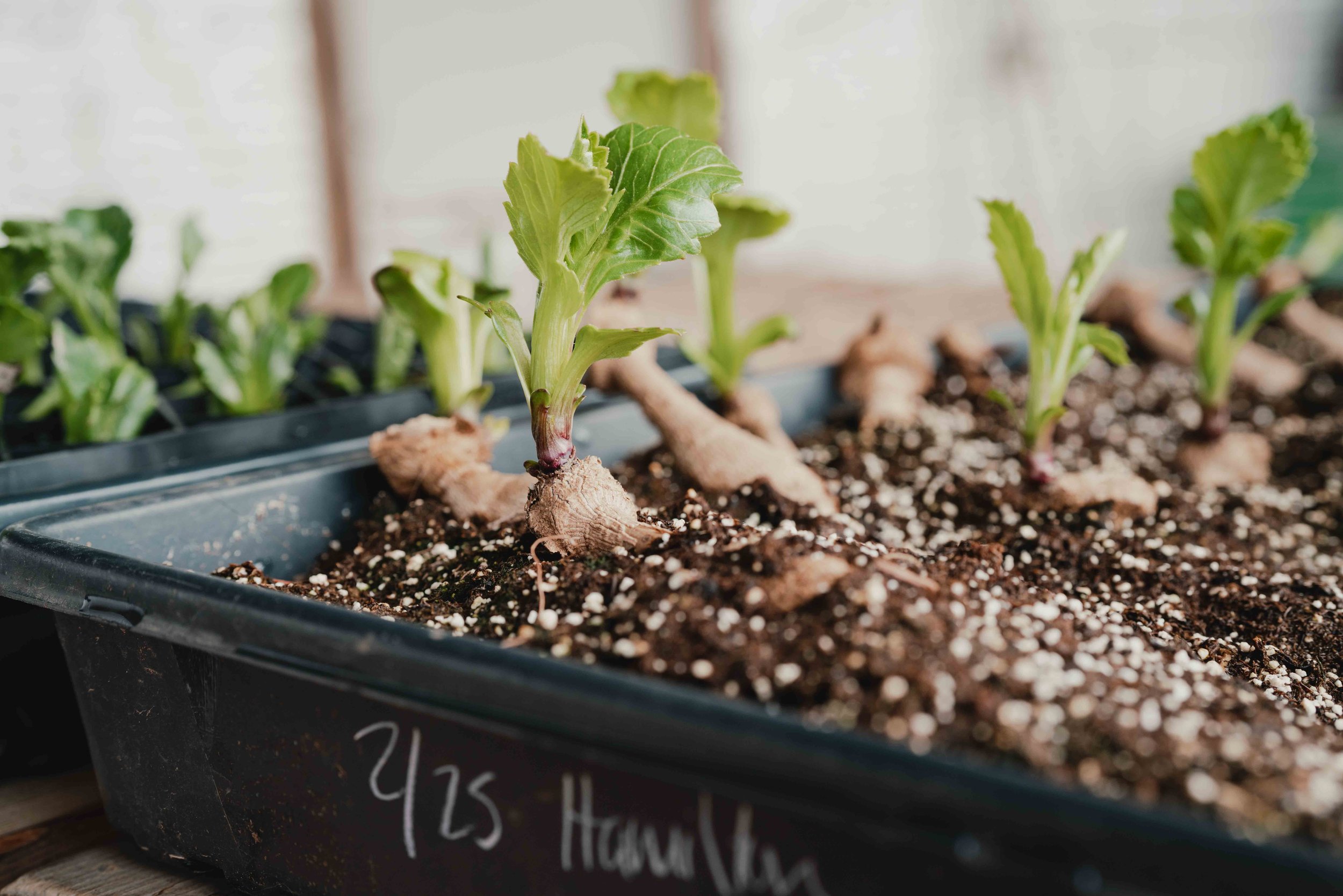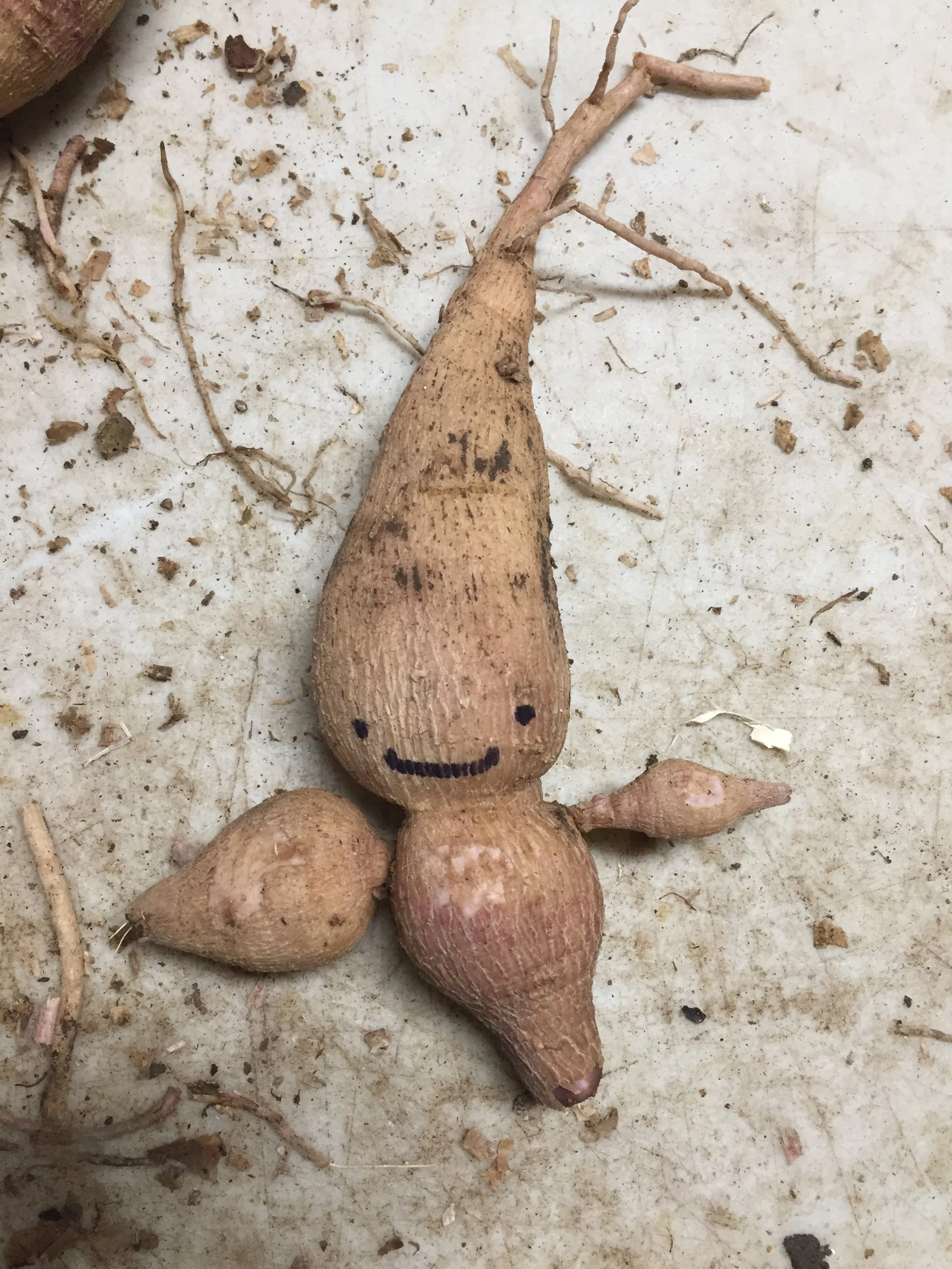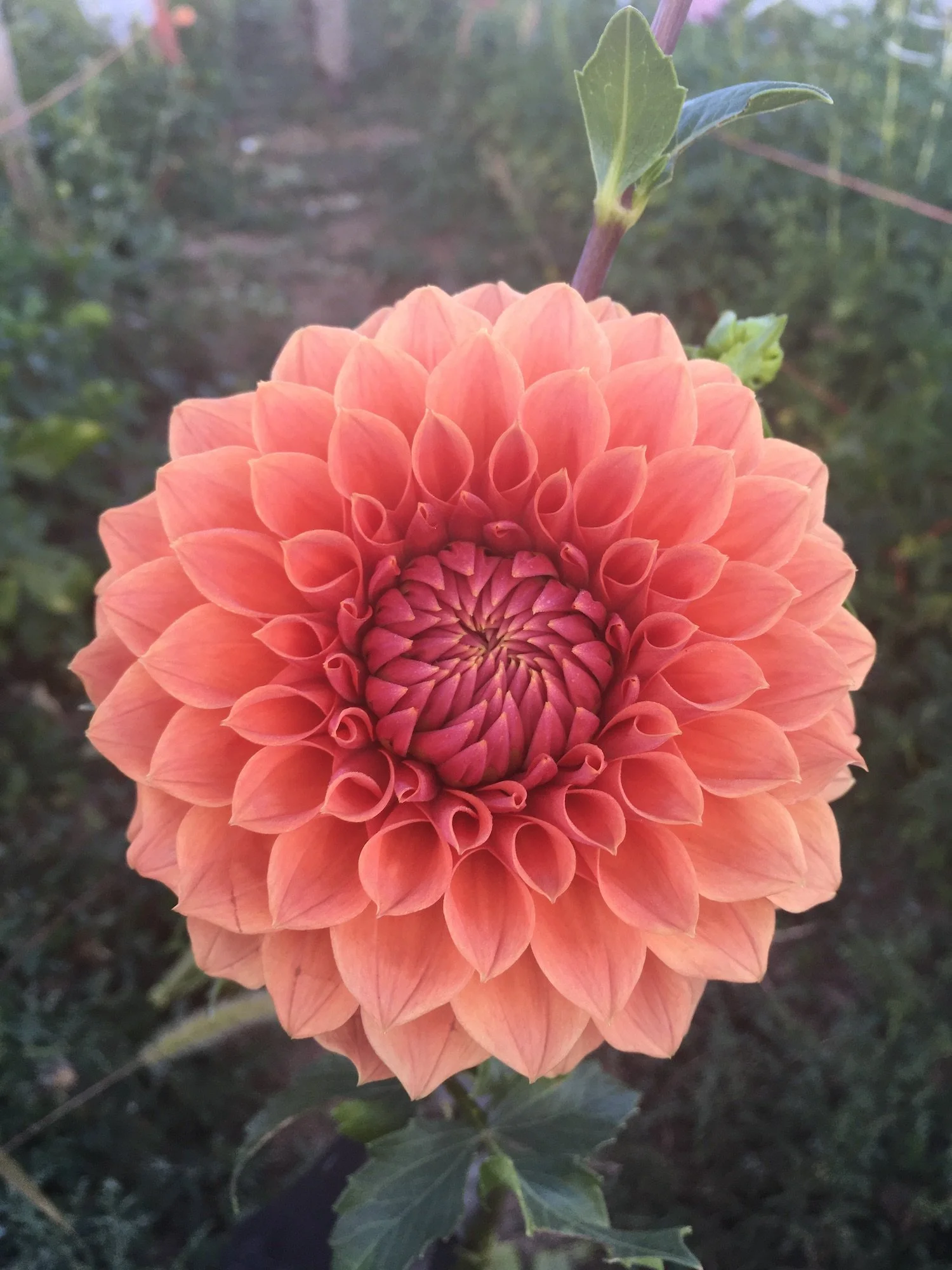Dahlia: Flower Spotlight
This article comes from our series of flower spotlights, which are adaptations of the newsletters we send to members of our flower share throughout the season. You can see more spotlights by heading here.
Dahlia bipinnatus, Dahlia
Dahlias and some of their beautifully different forms and colors.
Dahlias are the flower we wait for all season, and they are spectacular. Their many varied forms, from the smallest 'pom' dahlias to the large and impressive 'dinnerplates,' like Café Au Lait, always bring me so much joy and wonder at the natural world. They are also fascinating to cultivate. I hope you enjoy their symmetry and spiraling forms. I love their many faces, colors, and the season-long journey of cultivating them, from cuttings and tubers to giant plants and back to digging and dividing tubers in the fall.
Last year, we had two artists come stay on the farm for a few days. From their experience, they created an art piece that is currently on view at the Boulder Museum of Contemporary Art - part of their agriCulture exhibit. They chose to use dahlias as their main inspiration from the farm! I hope you'll take a moment to visit BMoCA to see it, along with the fascinating pieces made by artists who partnered with other farms.
Dahlias are named for a Swedish botanist, Anders Dahl, though they were first described in 1570 by the Spaniard Francisco Hernández, physician to Philip II. They are native to Mexico, where they are in fact the national flower. The Aztecs and Toltecs recognized them as ‘chichipatl’ and ‘cocoxochitl’. They reproduce via seeds and from underground tubers, which are edible. I’ve eaten a few dahlia tubers, and they will taste like jicama, cucumber, water chestnut, potato, or celery, depending on the variety!
We start our dahlia season in early March, when we pot up overwintered tubers to sprout and begin taking cuttings from varieties we want more of. Once we have a good sprout, we cut it from the mother tuber and use an aloe vera gel as a rooting agent, then put it into moist soil, where it sprouts roots in about 10 days. These cuttings are potted up as they grow, and are planted out along with our other tubers. Cuttings usually give us tubers in the same season!
Dahlias potted up in a tray for taking cuttings.
In 2023, we planted about 15 beds of dahlias, perhaps 2,500 plants. We started planting around May 1st, giving the tubers time to wake up naturally in the cooler soil. For most of the beds, we used our farm partner Matt's tractor to dig two 6" deep trenches 18" apart. Tubers are laid on their side in the trench, with their eyes facing up. After we cover and water them, we wait for them to sprout. Depending on the weather, this can take 2-4 weeks. Once they've sprouted, we begin watering them again.
When the plants are about one foot high, we pinch out the central stem, which gives us more side shoots with longer lengths. At this point we begin foliar feeding the plants with fish and kelp extracts as well as biological amendments like vermicast tea and a Korean Natural Farming preparation that I call Potato Leaf Mold Tea. The idea is to give our plants more diversity of bacteria, fungi, and actinomyces to make partnerships with, and to protect them from pests.
However, we have some voracious creatures called grasshoppers on the farm, so we use organza bags to cover all the dahlia buds so they can't be chewed to shreds. This is a very time-consuming solution, as we have to take off the organza bags and put them on another bud whenever we harvest. But finally, after all that, in early August we begin to see beautiful dahlias blooming, and it's a joy to reap the rewards of our labor. Each plant can give us 10 - 20 blooms!
In October, when we usually get our first frost, dahlias are very dramatic. On the morning of the frost, they glitter like frosted window panes, ice crystals forming on the tips of their radial petals. It is one of the most beautiful sights of the season. When the sun hits them that morning, they instantly turn black and droop, and become quite hideous! After the frost, we wait about 2 weeks before beginning the long process of digging and dividing the tubers.
First, we cut back the plants to about six inches, using hedge shears. When I get a rotary mower on a tractor, we'll use that instead. We dig each plant individually, with a digging fork like one would use for carrots in the garden. When I get an undercutter or a potato digger on a tractor, we'll use that instead! Once the plants are out of the ground, we wash the roots until we can clearly see the eyes or growing pints of the tuber. Then, we start dividing, breaking up the clump of tubers with our snips and shears into individual tubers. This takes forever, but it provides good fall work for me and my employees. It's a task I always look forward to - sitting in the cozy greenhouse for weeks listening to some long fantasy series like Harry Potter or Lord of the Rings, while we divide thousands of tubers - each plant produces 7 tubers, on average, but can produce as many as 20 or as few as 0!
Tubers are friends!
Tubers are packed into crates with a mixture of wood shavings and peat moss and stacked in the barn for storage. We keep an eye on them for moisture, to ensure they neither dry out nor rot. Since we've counted the tubers that went into storage, at this point I can start listing tubers on our website for sale. Our sale usually begins January 1st of the next year, and tubers are shipped out in April and May. And we start all over again in March, potting up!
I hope you enjoyed the saga of our dahlia tubers and this very long novel. Enjoy and cherish your dahlias this season and always :)
Dahlia ‘Hy Patti’, one of my faves.





